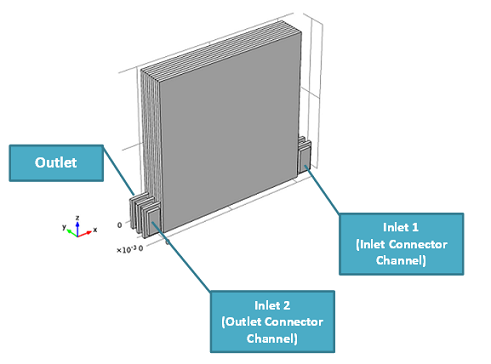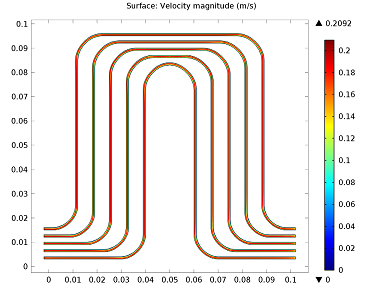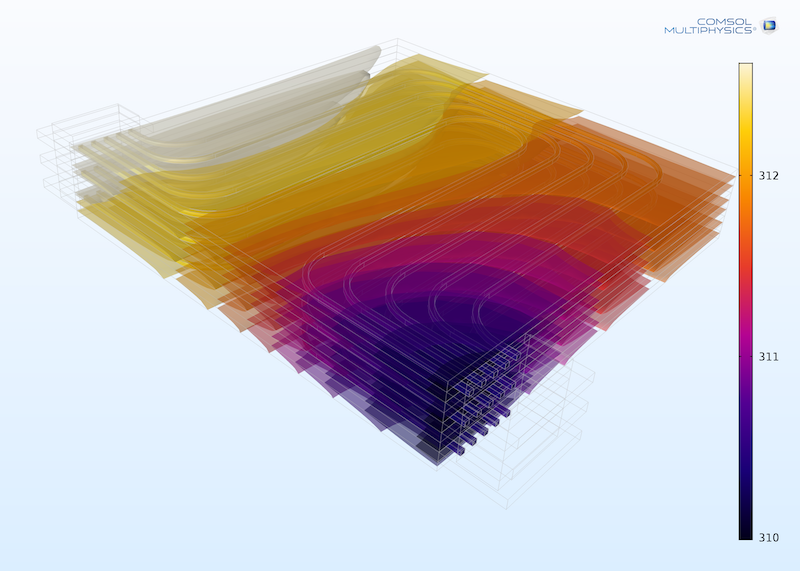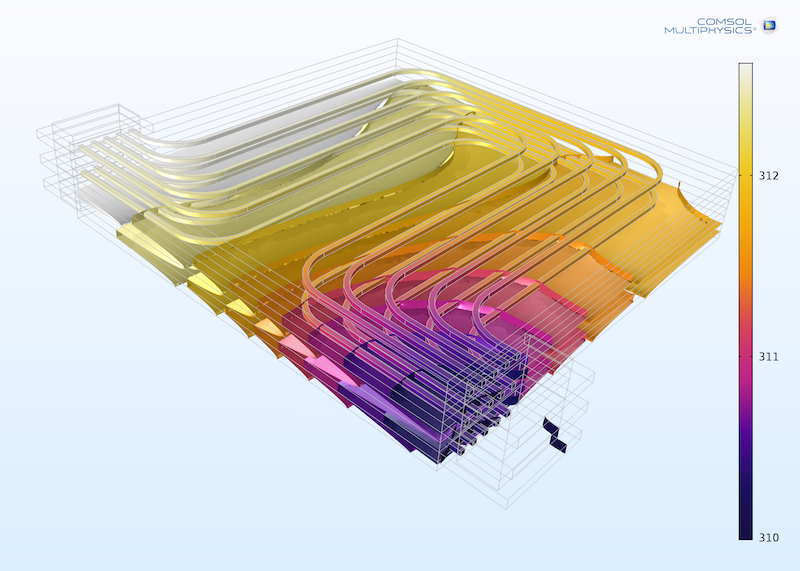
Get a brief introduction to creating a lithium-ion battery model using the COMSOL Multiphysics® software in three sequential studies. At the end of the blog post, there is a link to download the tutorial model.
Liquid-Cooled Lithium-Ion Battery Model
The lithium-ion battery model in question simulates the temperature profile in several battery cells and aluminum cooling fins in a liquid-cooled Li-ion battery pack.

Geometry of the lithium-ion battery, consisting of three unit cells, one inlet connector channel, and one outlet connector channel in the cooling fins.
The model is based on two assumptions:
- The battery material and cooling fluid material properties can be calculated using an average temperature for the battery pack
- The fluctuations in heat generation during the load cycle are notably slower than the heat transport within the battery pack
What does this mean for the model? Well, the first assumption works if the temperature variations in the battery pack are small. The second assumption just means that the thermal equilibrium is quasistatic for the given battery heat source and at a given operational point during the load cycle. (Quasistationary processes simplify theoretical thermal studies.)

Supporting the second assumption: The velocity magnitude in the first cooling fin infers that the residence time for the fluid time in the plates is in a range of mere seconds.
The model is solved sequentially using COMSOL Multiphysics and the add-on Batteries & Fuel Cells Module and Heat Transfer Module, with one study per physics interface (three in total). First, the fluid flow of the liquid-cooled battery pack is modeled. The fluid is modeled using the same material properties as water, calculated using the input temperature. This is consistent with the first assumption, stated above.
Next, a time-dependent study is conducted, solving solely for the 1D battery model. Here, the battery model is assumed to be of the same temperature as the cooling fluid’s inlet temperature. Finally, a stationary study is carried out, solving the quasistationary temperature of the battery pack. This step combines the first two steps (using the flow velocity from the first step and the average heat source taken from the last time step of the time-dependent simulation from the second study).

Temperature in the lithium-ion batteries. The temperature variation is greater within a single cell (xz-plane) than through the depth of the pack (the y-axis).

Temperature of the cooling fluid.
To learn how to build this model yourself, you can download the tutorial model from the Application Gallery (via the button below) or access it from the Application Library in the software.
Editor’s note: This blog post was updated on 07/24/2017.




Comments (0)